HAWKs Spotted in Tempe!
As described in an earlier update, the City of Tempe has been wrapping up construction along the Western Canal. Part of the Canal development has included the installation of two HAWK signals, the first such signals in Tempe. HAWK stands for High-Intensity Activated CrossWalk, and is a style of road crossing developed in Tucson. See this page for information about HAWKs, as well as the other specialized crossings found in Tucson.
The two crossings in Tempe are located on Rural Road at the Western Canal, and on McClintock Drive at the canal. The City is providing a pamphlet that describes how the HAWK signals work, available through the Tempe In Motion website, and wants to spread the word as much as possible. If you have had experiences with either of these crossings and would like to share, feel free to leave comments here. We’d love to hear if these seem like an effective system for making canal crossings safer and more efficient, and if we should be encouraging more Phoenix-area municipalities to install them.
From a bicyclist or pedestrian standpoint, the crossings change to a “walk” signal within a few seconds of pressing the button, and are designed to force cars to slow down and stop whenever someone needs to cross the street. At other times, they allow cars to pass through freely.

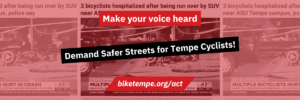
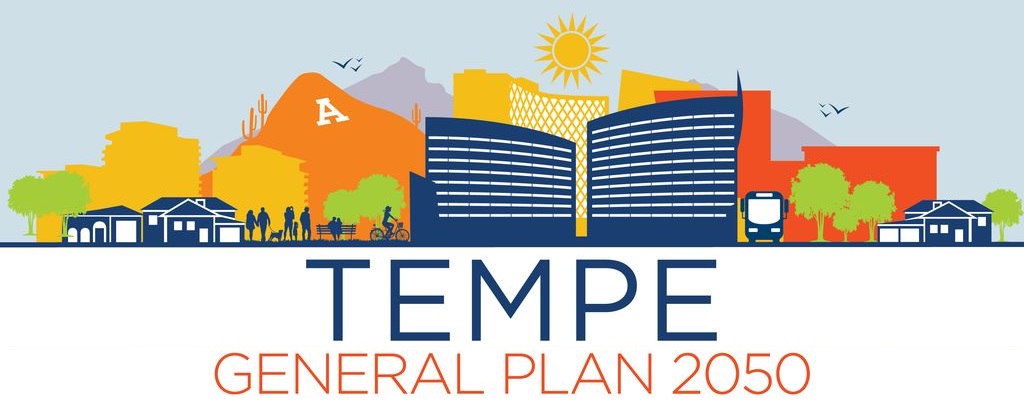
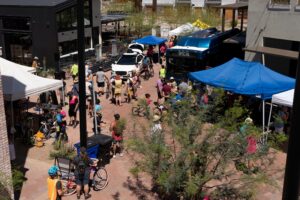

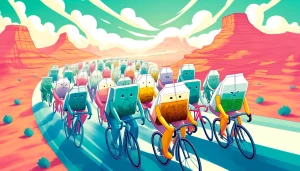
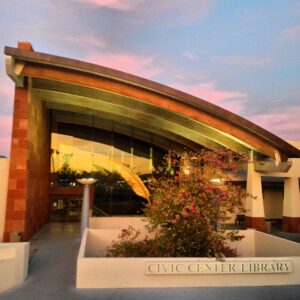
Those crossings are great! I used them on the canal further out through Chandler and Gilbert and it’s nice how quick they change especially during high traffic times. Haven’t used them in Tempe yet, they weren’t activated a couple weeks ago when I last rode the canal.
Very nice.
Hey wait a minute! “..are designed to force cars to slow down and stop whenever someone needs to cross the street. At other times, they allow cars to pass through freely.”
Cars? Bikes too!
They require that drivers of all types vehicles slow down and stop when solid red and when they turn flashing red allow drivers to proceed if safe and clear after a full stop.
So I’ve had to stop a three times on my commute. I do proceed after there is no one else crossing or about to when the light starts to flash. But no car drivers do. They just sit there any make me feel like a scoffaw even though I am following the rules.
It is an extra stop on my commute, only a tiny bit annoying when heading southbound Rural and I get a red at Bell De Mar, then it turns green I go get up the rise to the canal and boom I have to stop again. To bad they can’t be synchronized so if the light at Bel Mar has just turned green the HAWK will give 20sec or whatever it takes to let traffic that just started to clear.
Nice for the path definitely. Those crossing were dangerous before. Hopefully it will eliminate the frogger game it was before at rush hour.
Good point, Alex. Yes, it’s one more stop for bicyclists as well. I think the City worries that people won’t use the signal if it means they have to wait a long time, especially people who were accustomed to playing Frogger through traffic before the signals were installed. A friend of mine pointed out that he really likes the signals because they change in less time than he would usually have to wait for traffic to clear.
That’s funny that the cars haven’t quite figured the signals out yet. At least they’re being overly cautious instead of paying no attention whatsoever!
Cars will _never_ figure out the signals. They remain stopped until the flashing red stops. After all, they have signs saying “Stop on Red”, don’t they? IMO they look too much like railroad crossing signals.
These signals were a mistake. Too non-standard for the Valley. Standard traffic lights would have been better.
Following Tucson’s lead on anything, is never a good idea.
They may be a non-standard sequence, but they follow the standard. Solid red always mean stop and wait and flashing red always means stop, but proceed when clear.
I’ve noticed another cyclists behaviors in the last week. When I head west down bell de mar to make a left turn south on rural. Twice now I’ve seen other cyclist following same path but to avoid red light (it only takes 1 min to change!) to enter Rural ride wrong way down side walk press HAWK button cross and then continue down Rural. Once I beat them to the HAWK crossing as the bel de mar light turned before they got to the crossing the other time I got to the crossing just as it turned red. Doh.
The other thing I noticed is some cyclists and runners still just cross without pressing the button.
But overall they are essential to making using the canal reasonable. I never used the canal because the crossings were so horrendous at rush hour. Now I still don’t as I prefer Guadalupe for east west travel as it connects up to places I go much easier.
Google “crosswalk hawk confusing” and you’ll find articles saying that the flashing red is a problem pretty much everywhere HAWK’s have been tried. They cost $250K each and are experimental. Not a good use of scarce money.
I wonder what would make the crossing safer or at least more practical otherwise.
Were there recorded accidents at any of the canal crossings?
If not for safety, for practicality – I do know at rush hour traffic is so continuous at McClintock or Rural that one could wait many minutes for a gap to cross.
Why not a regular traffic signal like they have at the “Kyrene Canal Path” crossing on Elliot?
I have had cars fly through the red lights while I am crossing many times. I do like the lights. But I think because some people are not used to them being there, or they disregard them all together.
They take too long to change. I agree with Larry, why not a regular crossing? Drivers are already too busy with phones and texting to introduce something new they won’t pay attention to. I crossed just fine before/without the light, and I continue to do so. I do appreciate the effort, though.
I don’t agree with people saying that the HAWKs won’t work because they are new and different. As Larry said, they are experimental. But I use that as part of my argument FOR the HAWKs. They are an investment in future safety more than they are in present safety. True, current drivers have rarely experienced this system so they either don’t follow it or otherwise respond negatively to it. But as kids get older and get their drivers licenses these HAWKs will just be a part of their driving experience from the beginning. We need to make changes that will accustom the younger generations to sharing the road. I think we can all agree from experience that teaching old driving dogs new tricks can be difficult, if not futile, but the puppies out there with there permits are ready to soak up the new age of road sharing.
I have seen several close calls at the Rural crossing. It seems many cyclists and runners/pedestrians don’t press the cross request button and cross anyway and still seem to expect traffic to stop. I’ve seen several very risky crossings and have had a pedestrian step right out in front of me when the HAWK had not been activated. Prior to HAWK people crossed with greater care.
Earlier this week a driver did slow for a runner who was crossing without activation, the runner crossed in front of the driver who then stopped hard, but the driver in the outside lane didn’t see them and slammed on their brakes just as the runner appeared from in front of the stopped vehicle. They missed the runner by less than a foot.
Also, just as in the week or so after they were installed most drivers still do not proceed when flashing if clear. No one is learning – not drivers, not cyclist, not pedestrians. What a mess.
A kind of followup to the usage of those HAWKS.
There have been signs put up below the signals stating that it’s okay to proceed when the red lights are flashing. Drivers seem to be getting used to them, and I’ve had few problems with drivers at all.
Pedestrians and cyclists, on the other hand, continue to simply cross whenever there’s a gap. I’ve done my share of rolling a stop sign or two, but four lanes of traffic when there’s a light? I’m good waiting ~30 seconds, thanks.
The last time I activated the light, I waited for my “walk” signal and was just starting to mount my bike… when a car zoomed through several seconds after his light went red.
I still ride the canal frequently, but I do not use the HAWK’s. There is just not enough car traffic to justify them. I believe that hardly anyone is using them.
I have seen the additional signs that Toby mentioned. How many signs are on the signals now? Maybe they should have an officer out in the street handing out written instructions.
The HAWKs, at least in these locations, are a failure and really should be removed.
It’s interesting to see people’s different experiences. I think everyone can agree that it’s good to see Tempe implementing any kind of signal specifically for bicycles and pedestrians. The traffic at Rural and McClintock can be heavy depending on when you cross those roads. When the roads are busy it would be difficult to cross without the HAWKs.
As for the HAWK vs regular signal debate, as I understand it they were specifically designed to be different and to get people’s attention that this isn’t a regular intersection. I personally believe that people are learning how they work and will get used to them in time. Once that happens we can work to get more bike crossing signals installed at locations throughout the Valley.
I love the HAWKs. I used to ride Guadalupe because I didn’t like playing frogger across the major roadways along the canal. At first they didn’t change fast enough, but it looks the the timing has been changed. Now my commute is awesome. The additional signage for the cars is definitely helping and I think anything that is going start making car see bicycles is a good thing.
I’d rather take Bel de Mar & Vaughn if looking for a low traffic E/W route – there are already signals at Rural and McClintock.
Again this AM I had to slow hard to avoid hitting a cyclist running the HAWK. It seems cyclist/runners are more likely to dart in front of traffic with the signal in place.
Larry said: “Cars will _never_ figure out the signals. They remain stopped until the flashing red stops.”
IMO, this is a perfect example of the problem of not having drivers license renewals. Back around 1995 the state of AZ stopped renewals every 4-5 years. You only have to renew at age 65 (or something like that).
I think that’s contributed to drivers losing a sense of the responsibility of driving (sharing finite resources). And, obviously we lost the opportunity to educate drivers on new forms of signals, like the one under discussion.
I’m sure this is an unpopular comment. Nobody wants to go to DMV every 4 years. But, that was an opportunity to impress various things upon drivers. I think things have gotten much worse since 1995.
I saw this article today about HAWKS in Phoenix:
http://www.azcentral.com/news/articles/2010/08/19/20100819hawk-lights-lower-phoenix-pedestrian-deaths.html
Thought it might be useful to anyone who stumbles across this.
Thank you, az2008! I’m going to post a link to that article in the current TBAG newsletter.
Well it’s been over a year since the HAWKs were put up.
I see just as much confusion now, as I did then.
They are a failure.
Why are you so down on these things? Even if results are mixed they aren’t failures. And you do have to admit that they get people’s attention and help signify that it’s not just another regular light. I think the advantage of the HAWK is that people notice that something special is going on there.
Having any kind of signal at a canal crossing is a huge step forward. Lets work together to make sure they install signals at all canal crossings Valley wide, HAWK or regular light or whatever.
The lights at Rural and McClintock are great, but the crossing at Baseline is very dangerous, not to mention incomplete (about 20-30 feet of gravel on the north side). Did they loose interest in the project at that point or is something in the works? The path is a great city(s) improvment project, but something really should be done at baseline ~ before someone gets killed!
I hope there are plans for more improvments. Thanks for the path!